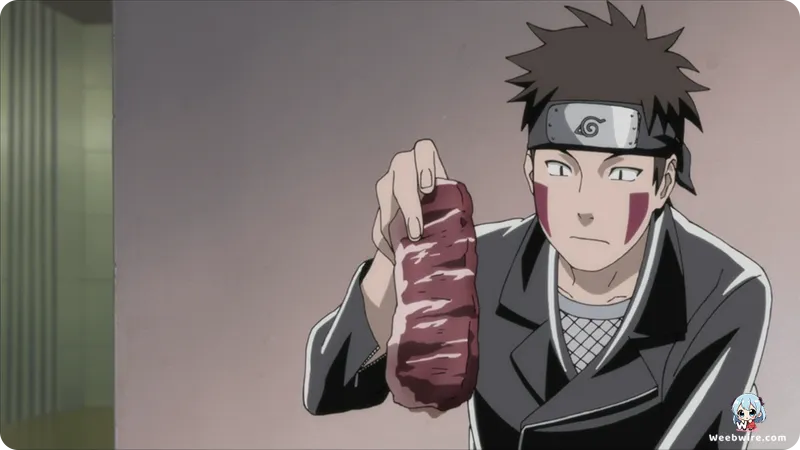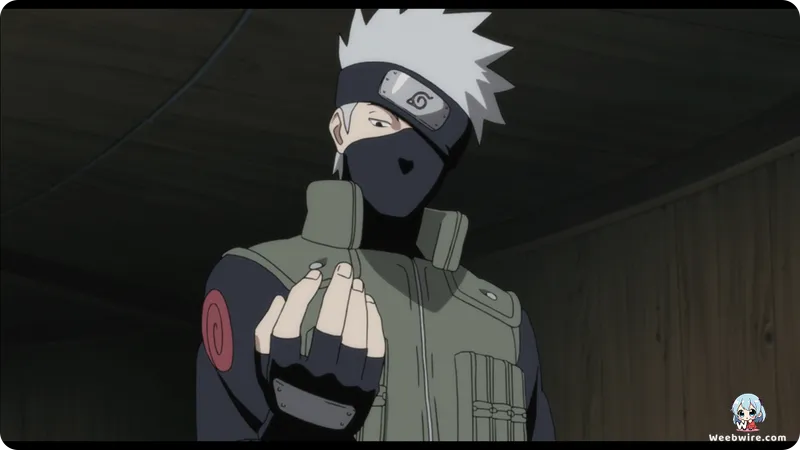Naruto Shippuden's 'The Will of Fire' Unveiled: A Deep Dive into Kakashi's Sacrifice and Konoha's Core Philosophy

Step back into the exhilarating world of Naruto Shippuden with an in-depth look at 'The Will of Fire,' the third cinematic installment released in 2009. Far from being just another action-packed adventure, this film carved out a unique space within the beloved series by deeply exploring the revered 'Will of Fire' philosophy and offering an unprecedented character study of Konoha's perpetually cool and mysterious jounin, Kakashi Hatake. While epic battles are a hallmark of Naruto films, 'The Will of Fire' distinguishes itself through its profound thematic exploration and its surprising focus on the internal struggles of one of the Hidden Leaf Village's most iconic figures, revealing layers of his persona rarely seen.
Kakashi's Sacrifice and the Will of Fire
The narrative thrust of 'The Will of Fire' centers on a looming global ninja war, a catastrophe that can only be averted by the ultimate sacrifice of a ninja possessing a unique bloodline limit. In a poignant echo of his father Sakumo Hatake's controversial past, where Sakumo chose comrades over mission, leading to his eventual demise, Kakashi heroically steps forward to offer himself as this sacrifice. This pivotal decision by the film's creators provides an extraordinary window into Kakashi's psychological landscape, vividly illustrating his unwavering loyalty and his profound understanding of what it truly means to safeguard his village and his friends. It’s a powerful testament to Kakashi's personal interpretation of the 'Will of Fire,' transcending mere patriotism to embody a deep, self-sacrificial love for his comrades, making it a crucial watch for anyone seeking a deeper appreciation of his character beyond his masked demeanor and enigmatic history.
The Antagonist: Hiruko and the Chimera Technique
Adding another layer of intrigue is the film's antagonist, Hiruko, a formidable figure from Konoha's past. A former Hidden Leaf ninja and a contemporary of the legendary Sannin, Hiruko was excommunicated for developing the forbidden Chimera Technique, an ability allowing him to absorb other ninjas' Kekkei Genkai and techniques. His audacious plan to absorb five specific bloodline limits to achieve immortality and ignite a global conflict serves as a stark warning about the corrupting influence of unchecked power. What makes Hiruko particularly compelling is his history with Kakashi's father, Sakumo, as the two were once close friends. This personal connection imbues Kakashi's mission with an added emotional weight, transforming the conflict into not just a battle for the world, but a confrontation with a darker reflection of Konoha's own history. The Chimera Technique itself stands out as a unique and rarely explored power within the Naruto universe, cementing Hiruko's status as a memorable, albeit non-canon, villain.

Exploring the Will of Fire Philosophy
Beyond its gripping plot, the movie subtly enriches the overarching theme of the 'Will of Fire' itself. This cornerstone philosophy of Konoha, passed down from the First Hokage, Hashirama Senju, emphasizes love, loyalty, and protection for future generations. 'The Will of Fire' daringly explores its more extreme interpretations. Kakashi's readiness for self-sacrifice and Hiruko's twisted perversion of ninja ideals for personal gain both illuminate the multifaceted nature of this philosophy. It compels viewers to ponder the delicate balance between noble sacrifice and reckless self-destruction, and the inherent dangers of fanaticism, even when ostensibly rooted in a virtuous ideal. This nuanced portrayal lends surprising depth to a film that could have easily prioritized spectacle over substance.
Production Quality by Studio Pierrot
From a production standpoint, Studio Pierrot, the renowned animation studio behind the main Naruto series, upheld its consistently high standards for 'The Will of Fire.' The movie showcases exceptionally fluid animation during its numerous action sequences, particularly the climactic confrontations involving Naruto, Kakashi, and Hiruko. The visual storytelling seamlessly complements the narrative's emotional weight, featuring dynamic camera work and intricately detailed character expressions. The consistent quality delivered by Studio Pierrot in these cinematic ventures ensured a distinct and elevated theatrical experience compared to the weekly television episodes. Furthermore, the film’s original soundtrack played a pivotal role, with its compositions expertly enhancing both the tension and emotional beats, drawing the audience deeper into the high-stakes narrative.
Non-Canon Freedom and Character Depth
Finally, the non-canon nature of 'Naruto Shippuden the Movie: The Will of Fire' afforded its creators significant creative liberty, a luxury often unavailable within the strict confines of Masashi Kishimoto's manga storyline. This freedom enabled the construction of a narrative focused entirely on specific themes and characters without concerns for long-term repercussions on the main plot. This allowed for an unparalleled deep dive into Kakashi's character arc and a comprehensive exploration of the 'Will of Fire' without the need for reconciliation with the ongoing manga. While some fans might prioritize canon stories, these non-canon films frequently provide unique perspectives and intriguing 'what-if' scenarios, enriching the broader Naruto universe and offering fresh, self-contained narratives for beloved characters. 'The Will of Fire' remains a powerful testament to the enduring appeal of Naruto's world, delivering a compelling blend of action, profound emotion, and philosophical inquiry that continues to resonate with audiences worldwide.
Credits
Naruto Shippuden the Movie: The Will of Fire
Author
Masashi Kishimoto
Cover Art
Masashi Kishimoto, Studio Pierrot
Studio
Studio Pierrot
Publisher
Shueisha
Producers





